Mount Everest holds the impressive title of ‘tallest mountain in the world,’ but many people don’t know about its other, more gruesome title — the world’s largest open-air graveyard.
Since 1953 when Edmund Hillary and Tenzing Norgay scaled the summit for the first time, over 4,000 people have followed in their footsteps, braving the harsh climate and dangerous terrain for a few moments of glory.
Some of them, however, never left the mountain.
The top portion of the mountain, roughly everything above 26,000 feet, is known as the “death zone.”
There, the oxygen levels are only at a third of what they are at sea level, and the barometric pressure causes weight to feel ten times heavier. The combination of the two makes climbers feel sluggish, disoriented and fatigued and can cause extreme distress on organs. For this reason, climbers don’t usually last more than 48 hours in this area.
The climbers that do are usually left with lingering effects. The ones that aren’t so lucky are left where they fall.
Standard protocol is just to leave the dead where they died, and so these corpses remain to spend eternity on the mountaintop, serving as a warning to climbers as well as gruesome mile markers.
One of the most famous corpses, known as “Green Boots” was passed by almost every climber to reach the death zone. The identity of Green Boots is highly contested, but it is most widely believed that it is Tsewang Paljor, an Indian climber who died in 1996.
Before the body’s recent removal, Green Boot’s body rested near a cave that all climbers must pass on their way to the peak. The body became a grim landmark used to gauge how close one is to the summit. He is famous for his green boots, and because, according to one seasoned adventurer “about 80% of people also take a rest at the shelter where Green Boots is, and it’s hard to miss the person lying there.”
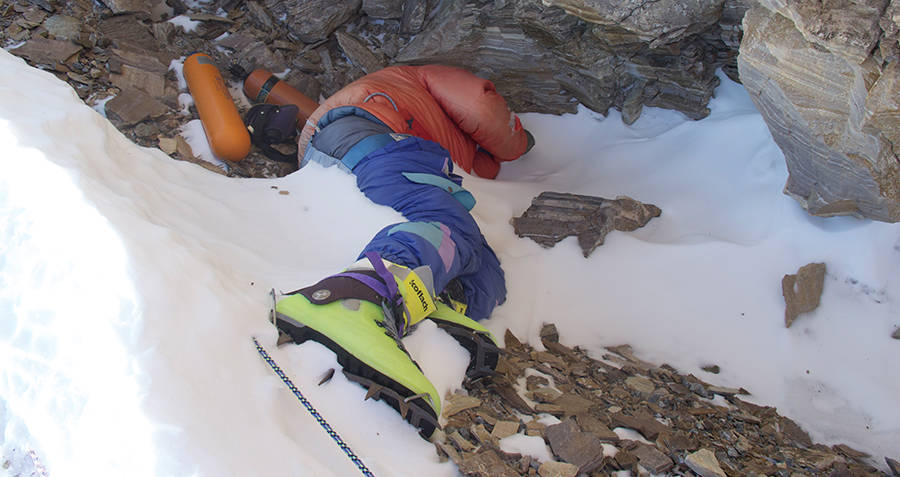
Maxwell Jo/ Wikimedia Commons“Green Boots” is known as such because of the neon boots he was wearing when he died.
In 2006 another climber joined in Green Boots in his cave, sitting, arms around his knees in the corner, forever.
David Sharp was attempting to summit Everest on his own, a feat which even the most advanced climbers would warn against. He had stopped to rest in Green Boots’ cave, as so many had done before him. Over the course of several hours, he froze to death, his body stuck in a huddled position, just feet from one of the most famous Mount Everest bodies.
Unlike Green Boots, however, who had likely gone unnoticed during his death due to the small amount of people hiking at that time, at least 40 people passed by Sharp that day. Not one of them stopped.
Sharpe’s death sparked a moral debate about the culture of Everest climbers. Though many had passed by Sharp as he lay dying, and their eyewitness accounts claim he was visibly alive and in distress, no one offered their help.
Sir Edmund Hillary, the first man to ever summit the mountain, criticized the climbers who had passed by Sharp and attributed it to the mind-numbing desire to reach the top.
“If you have someone who is in great need and you are still strong and energetic, then you have a duty, really, to give all you can to get the man down and getting to the summit becomes very secondary,” he told the New Zealand Herald, after news of Sharp’s death broke.
“I think the whole attitude towards climbing Mt Everest has become rather horrifying,” he added. “The people just want to get to the top. They don’t give a damn for anybody else who may be in distress and it doesn’t impress me at all that they leave someone lying under a rock to die.”
The media termed this phenomenon “summit fever,” and it’s happened more times than most people realize.
In 1999, the oldest known body was found on Everest.
George Mallory’s body was found 75 years after his 1924 death after an unusually warm spring. Mallory had attempted to be the first person to climb Everest, though he had disappeared before anyone found out if he had achieved his goal.
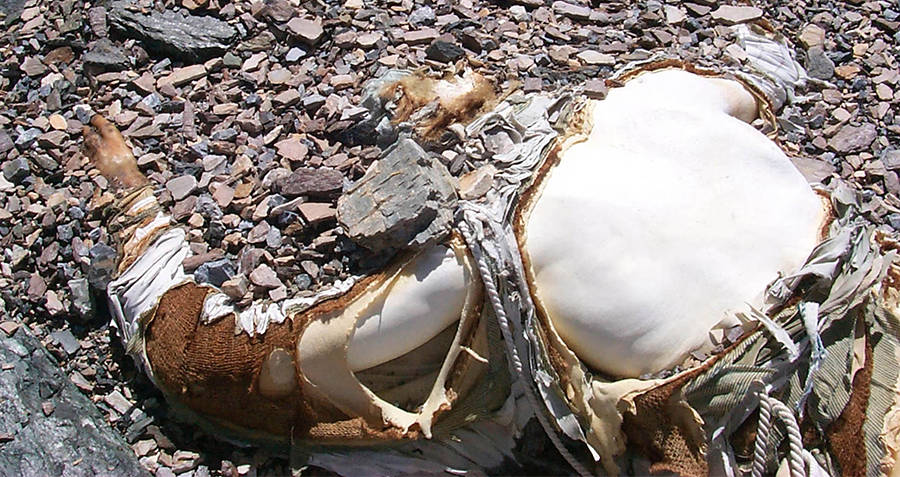
Dave Hahn/ Getty ImagesThe remains of George Mallory as they were found in 1999.
His body was found in 1999, his upper torso, half of his legs, and his left arm almost perfectly preserved. He was dressed in a tweed suit and surrounded by primitive climbing equipment and heavy oxygen bottles. A rope injury around his waist led those who found him to believe he had been roped to another climber when he fell from the side of a cliff.
It is still unknown whether Mallory made it to the top, though of course the title of “the first man to climb Everest” has been attributed elsewhere. Though he may not have made it, rumors of Mallory’s climb had swirled for years.
He was a famous mountaineer at the time and when asked why he wanted to climb the then unconquered mountain, he famously replied: “Because it’s there.”
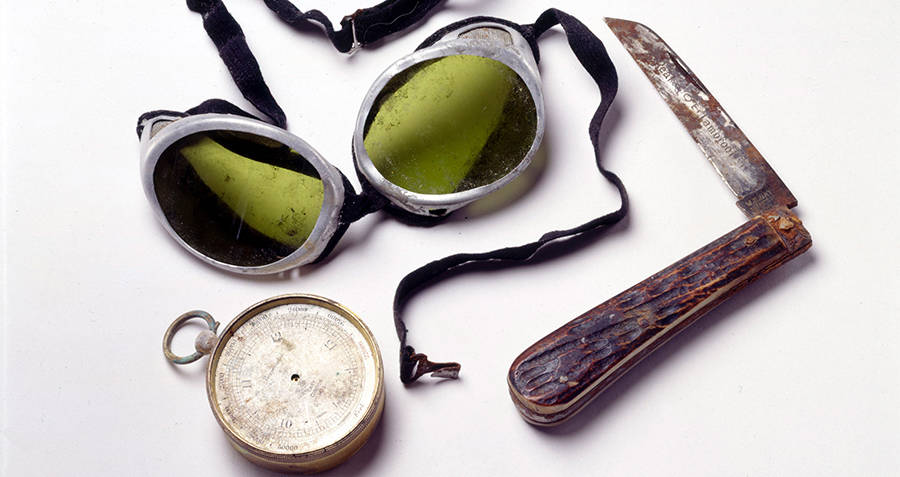
Jim Fagiolo/ Getty ImagesThe “primitive” artifacts found with George Mallory, dating back to 1924.
One of the most horrifying sights on Mount Everest is the body of Hannelore Schmatz. In 1979, Schmatz became not only the first German citizen to perish on the mountain but also the first woman.
Schmatz had actually reached her goal of summiting the mountain, before ultimately succumbing to exhaustion on the way down. Despite her Sherpa’s warning, she set up camp within the death zone.
She managed to survive a snowstorm hitting overnight, and made it almost the rest of the way down to camp before a lack of oxygen and frostbite resulted in her giving into exhaustion. She was only 330 feet from base camp.
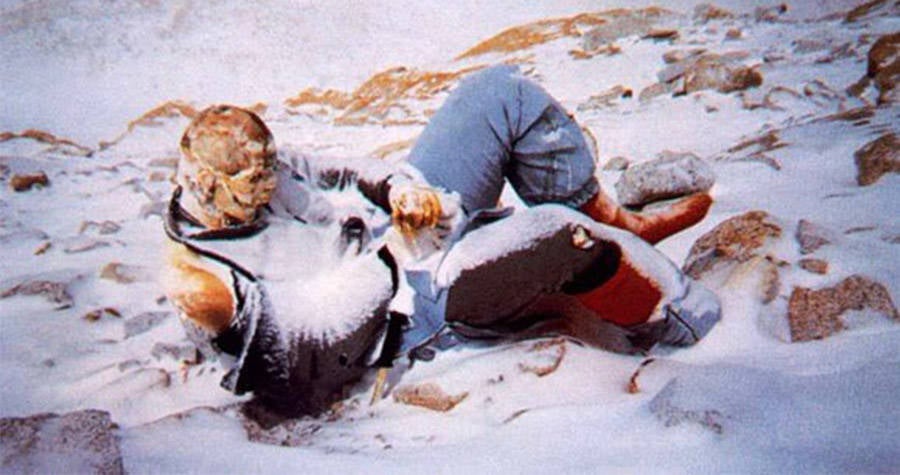
The Post Mortem PostThe frozen body of Hannelore Schmatz.



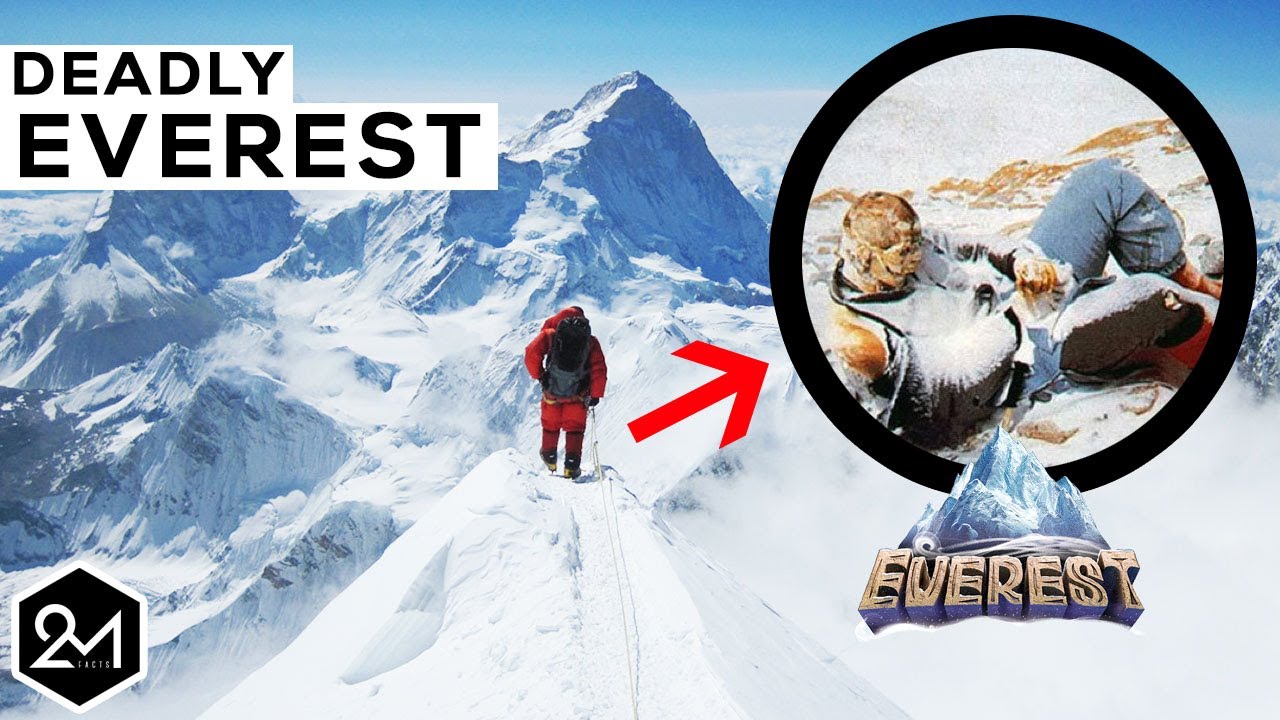

![[Pics] For The First Time In Over A Century, This 700-Year-Old English Home Is On The Market [Pics] For The First Time In Over A Century, This 700-Year-Old English Home Is On The Market](https://images.outbrainimg.com/transform/v3/eyJpdSI6IjY3YTU5Y2ZlMDk3MmYzNjI5OTZjNWY2MjBlZGViZTc2OGY3MTFhMjBmNGY2ZjRmNzlmMjg0ODEwZTI3MGJjOWQiLCJ3IjozMDAsImgiOjEyMCwiZCI6MS41LCJjcyI6MCwiZiI6MH0.webp)
